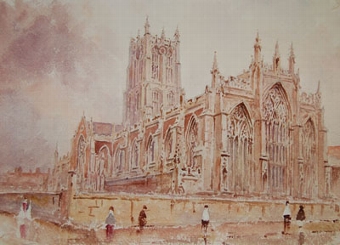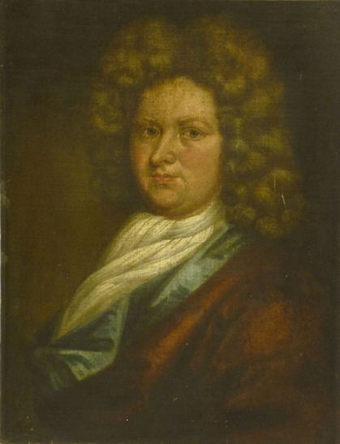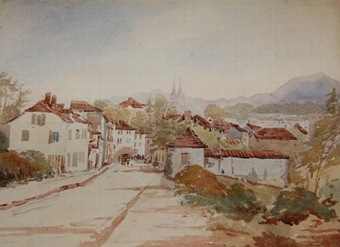featured item
a shepherd with and his sheep with the pyramids at gizeh beyond
- View other items in:
- antiques interior design modern and vintage
- other interior design
artware ltd
Enquire about this antique
Artware Ltd has 565 antiques for sale.
click here to see them all
Frederick Goodall was born on September 17th, 1822, in St. John''s Wood, London, the second son of Edward Goodall, renowned steel line engraver. His mother was of Huguenot descent. He was one of six brothers and four sisters and received his education at the Wellington Road Academy, a private school where Charles Dickens had attended. Two of his brothers, Edward Angelo and Walter, became well known watercolour artists, and a sister Eliza, exhibited at the Royal Academy under her married name of Wild. John Ruskin , Clarkson Stanfield, Augustus Pugin, David Roberts and of course Turner, were among regular visitors to the Goodall house and encouraged Frederick and his brother Edward A. to take up the profession. They spent their free time sketching at the zoo in Regent''s Park, the Albany Street Barracks and along the banks of the Thames. They watched the building of the tunnel at Rotherhithe and made friends with Tom Page, the engineer. A chance meeting with Isambard Brunel led to Frederick''s first commission: six watercolour drawings showing the tunnel works, four of which were hung in the Royal Academy when Frederick was sixteen. His first oil of a drowned miner won a silver medal of the Society of Arts. The money he made from these paintings paid for a visit to Brittany with brother Edward A. This visit to France and a subsequent tour in Ireland inspired the romantic and rustic scenes of village life influenced by David Wilkie, which, together with stirring historical episodes like Cranmer At Traitor''s Gate, were Fred''s next Academy exhibits. At the age of 20, he sold one for 100 guineas, and between 1838 and 1859 he exhibited 27 times. He readily found patrons and purchasers and in 1852 was elected ARA. Goodall''s opportunity to widen his horizon came in 1858 when he was invited to accompany a group of friends to Egypt. It was to be the turning point in his career and except for some portraits and a few English landscapes, his pictures , over 170 canvases in 46 years, shown in the Royal Academy alone, had Egypt as their setting. It was fortunate for Goodall that few people shared Ruskin''s view of the growing cult of the East, which he expressed about this time. Holman Hunt, Edward Lear and J.F. Lewis were among the artists who had taken up residence in Cairo.
In the autumn of 1858, Goodall rented an old house in the Coptic quarter with Carl Haag, who had been drawing master to Queen Victoria. Each morning they rode out into the surrounding countryside, sketching wherever they went. They crossed the desert to Suez, sleeping in huts that had sheltered British troops in the Crimea and then served as stations on the overland pilgrim route to Mecca. They camped for weeks with Bedouin tribesmen and narrowly escaped stoning while trying to paint portraits in the busy markets. Goodall describes in his reminiscences the fascination of the colourful seething crowds in the bazaar, the jostling camels in the narrow streets overhung with quaint carved balconies, the stillness of the mosques, the Sphinx by moonlight, the sail of a felucca on the Nile, the vast mystery of the desert. The two friends were very hospitable. They entertained eminent travelers and visiting artists and the household became renowned for its plum pudding made from a special family recipe. At the end of his seven month stay in Egypt, he packed 130 oil sketches with sheets of buttered paper to separate them and prevent them from sticking along with many watercolour sketches and countless pencil drawings, and shipped them back to London. Carl Haag left Egypt for Jerusalem and other places in the region to continue his painting. A month later, Goodall returned to London to begin work on large canvases inspired by these sketches. Goodall would paint many large oil paintings over the next decade with his first Orientalist work being Early Morning in the Wilderness of Shur in 1860 which was exhibited at the Academy that year and brought much praise from critics and fellow artists including Landseer and Roberts. This picture is full of colour and movement and sold for 1000 guineas to eventually hang in the Guildhall Art Gallery in London.
By now Goodall was earning ten thousand pounds a year which was a huge sum at the time. In 1869 the Royal Academy moved to their new galleries in Burlington House and Goodall was invited to exhibit 50 of his studies completed during his 1858/59 stay in Egypt which was an Academy record. Almost immediately the entire lot was purchased by the famous art dealer Ernest Gambart for 6000 pounds. Gambart sold all fifty before the end of the exhibition with fifteen of them alone going to the Duke of Westminster.
Frederick Goodall was elected an Associate of the Royal Academy in 1852, a full member in 1863, and his brother Edward A. became a full member of the Society of Painters in Water Colours in the same year.
In 1870 Edward, Frederick and his two sons F. Trevelyan and Howard returned to Egypt and stayed in the house of Mariette-Bey, the archaeologist, near Sakkara. Frederick would travel by donkey carrying the custom built sketch box given to him by friend and fellow artist Rosa Bonheur and often joined the Bedoin briefly in their travels. He soon traveled and camped with the Bedouin for months at a time painting their simple and ancient customs and the many other facets of their life in the desert. He had grown a beard and was often seen dressed in white and wearing a red fez. They filled their sketch books and collected material for Frederick''s pictures: Draperies and robes for the models, carved doors and paneling from old Cairene houses to provide backgrounds for harem scenes. Fred was meticulous - he even brought back a herd of Egyptian goats and a flock of sheep.
Some years earlier, Goodall had purchased 110 acres on the Harrow Weald from the Marquis of Abercorn. The actual purchase took place in 1856 but he was unable to build until the expiry of a lease. The ancient Grime''s Dyke earthwork as it was known at that time, ran through the property. The fosse was dammed at one end to make a stretch of ornamental water in the midst of which Goodall placed the statue of Charles the 2nd from Soho Square given to him by a wealthy neighbour and patron, Mr. Thomas Blackwell (of Cross & Blackwell fame). On Fred''s return from Egypt the second time, he left London and turned over his premises and studio in Camden Square to artist friend Alma Tadema. On his property at Harrow, he had built a brick and timber house fantastically gabled with immensely high chimneys and surrounded it with conifers and exotic shrubs. It was completed in 1872 and coincided with his second marriage to Alice Mary Tarry, age 22, daughter of lawyer Thomas William Tarry. The architect of their new home was Norman Shaw, who designed the studio-palaces for other successful artists such as Kate Greenaway and Luke Fildes. The name of "Grime''s Dyke" did not sound fitting for the new house, so Shaw suggested that it should be called Graeme''s Dyke. Here Gooodall entertained artists and society including the Prince of Wales and Charles Dickens. The Egyptian sheep lay about on piles of sand and visitors fed them with dates. While at Graeme''s Dyke, Goodall painted some 30 large biblical pictures for Mr. Blackwell, who built a special gallery to hold them in his home.
Goodall now had two young children to educate and he was finding that he needed to be closer to London. Graeme''s Dyke was reluctantly sold to Mr.Heriot the banker who then sold it to Mr. W. S. Gilbert ( Gilbert & Sullivan) around 1890. The house today is the beautiful Grim''s Dyke Hotel, one of the finest to be found anywhere. After returning to London, it is interesting to note that Goodall purchased the home "Rosenstead" originally owned by Ernest Gambart on Avenue Road. Gambart was now living in Nice in his newly built marble mansion.
Frederick Goodall continued painting into the 20th century. One of his last works in 1901 titled "The Snake Charmer" was sent to Marlborough House for His Royal Highness, the Prince of Wales, to inspect.
When Frederick Goodall died in 1904 there were examples of his work in many art galleries in addition to the Tate and the Victoria and Albert Museum. Unfortunately, a number of the Egyptian oil sketches shown in the Academy Exhibition of 1869 along with other works were destroyed in the last war. Although very wealthy at the height of his career, his income dwindled during his final years and by the time of his death he was bankrupt.
Frederick Goodall is buried at Highgate Cemetery in London along with family members.
Antiques.co.uk Ref: 8U8FEDVD
- Materials:
- Oil on Canvas
- Width (cm):
- 27.94 x 53.34cm 11.00 x 21.00ins
Artware Ltd
Artware Fine Art specialises in fine antique, decorative and historical portraits and topographical pictures . We cover a period from the 17th and 18th centuries through to the 19th & 20th Centuries. We have over 150 portraits in stock, which can be viewed on our web site, each historical portrait has well researched biographical information both on the sitter and the artist.
Contact details
18 La gare
51 Surrey row
London
Greater London
SE1 0BZ
UNITED KINGDOM
T: 0207 921 97904
E: greg@artwarefineart.com
W: www.artwarefineart.com














